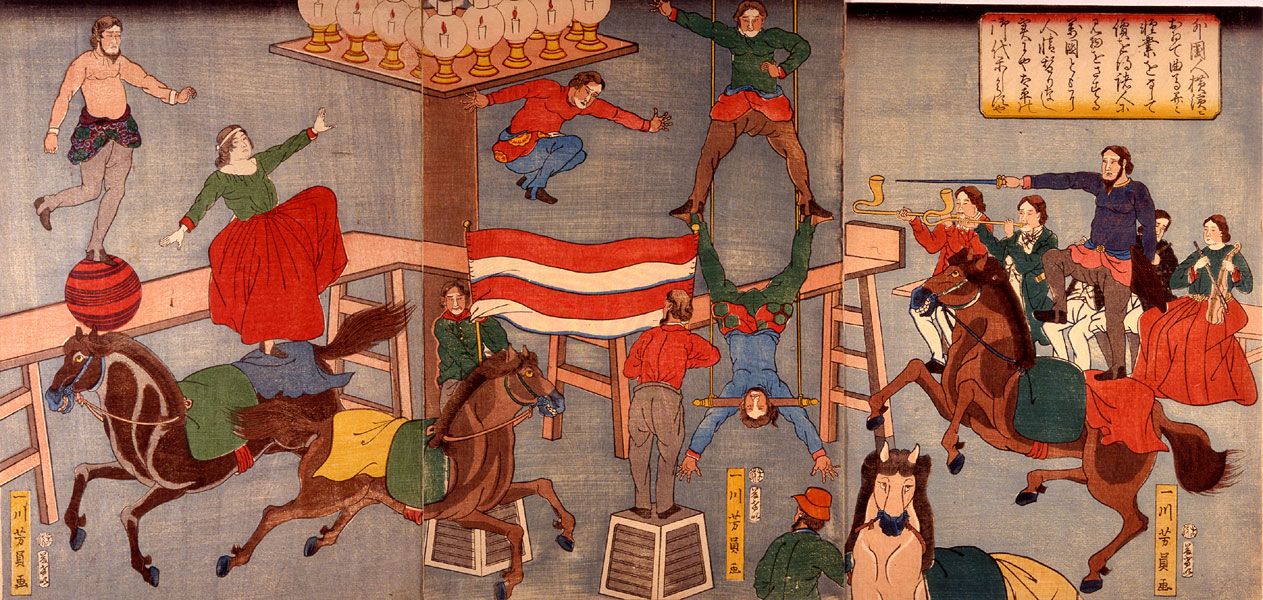
Title: Untitled (Circus in Yokohama) Artist: Yoshikazu (fl. ca. 1850-70) 1864:4 Format: Woodblock print Medium: Ink and color on paper Dimensions: triptych: 35.5 x74 cm (14 x29 1/8 in.) Source: Arthur M. Sackler Gallery, Smithsonian Institution The foreigners in Yokohama perform acrobatics in a circus. In all nations where this is performed it is valued, and human nature is the same, so would this not indeed be a pleasure for many peaceful generations? Thus reads the inscription in Yoshikazu's print that shows acrobats performing in a Western-style circus. A group of musicians accompanies a man and woman standing on horseback, trapeze artists, and a man balancing on a ball, which he maneuvers along a raised platform. The first Western circus to visit Japan came to Yokohama in 1864 under the direction of "Professor" Risley, an acrobat and adventurer from New Jersey. After establishing residence in Yokohama, Risley founded the town's first icehouse and dairy. In 1866 he organized a group of Japanese street entertainers for a two-year tour of the United States. This print, although untitled, probably depicts Risley's circus of 1864, which consisted primarily of acrobats and equestrians. The novelty of the circus attracted spectators from Edo and encouraged other entrepreneurs to send performers to Yokohama. In 1869, P. T. Barnum's midget couple, Mr. and Mrs. Tom Thumb, began their three-year international tour in Yokohama. Mrs. Tom Thumb (1841-1919) later recounted in her memoirs, "While in Japan, we exhibited before the high officials, the Japanese ladies and the few Europeans to be found in the empire. We were everywhere received with great expressions of kindness and hospitality." [Adapted from Ann Yonemura, Yokohama: Prints from Nineteenth-Century Japan] Visualizing Cultures image number: Y0150 Keywords: Westerners, animals, entertainment, musical instruments, Yokohama, circus |
On viewing images of a potentially disturbing nature: click here. |
Massachusetts Institute of Technology © 2014 Visualizing Cultures |